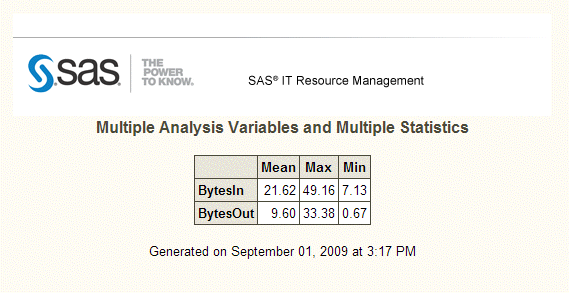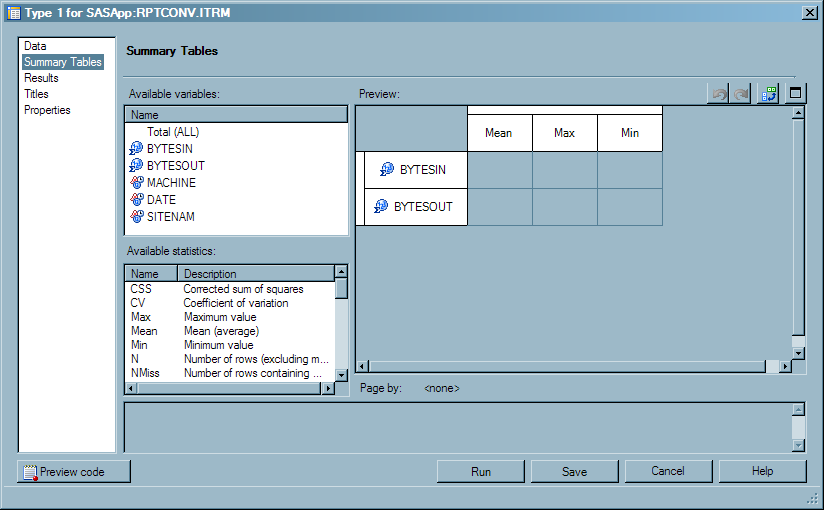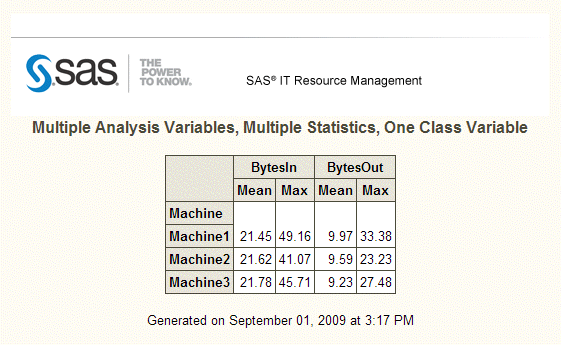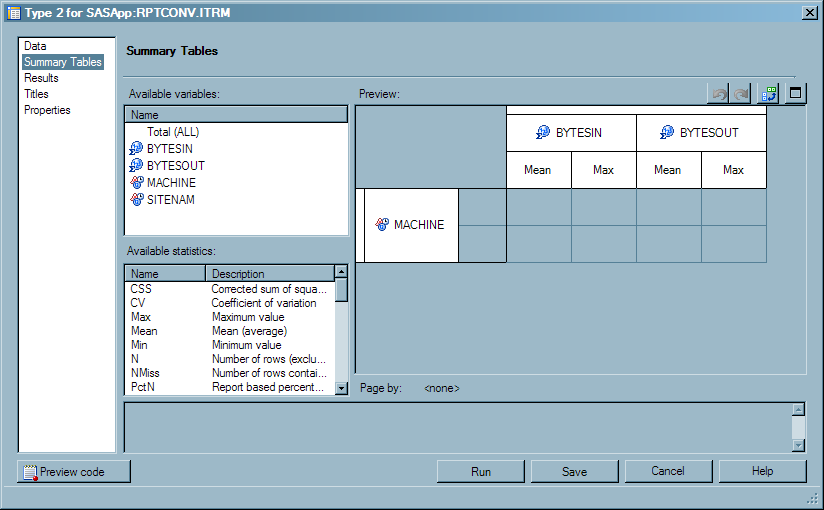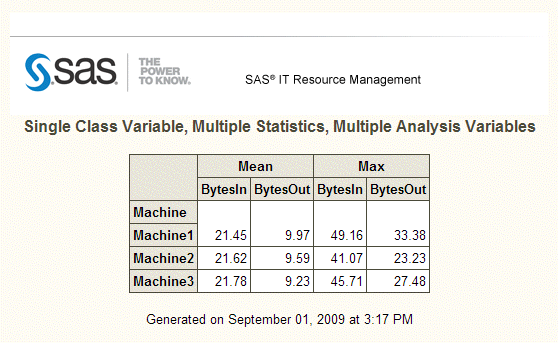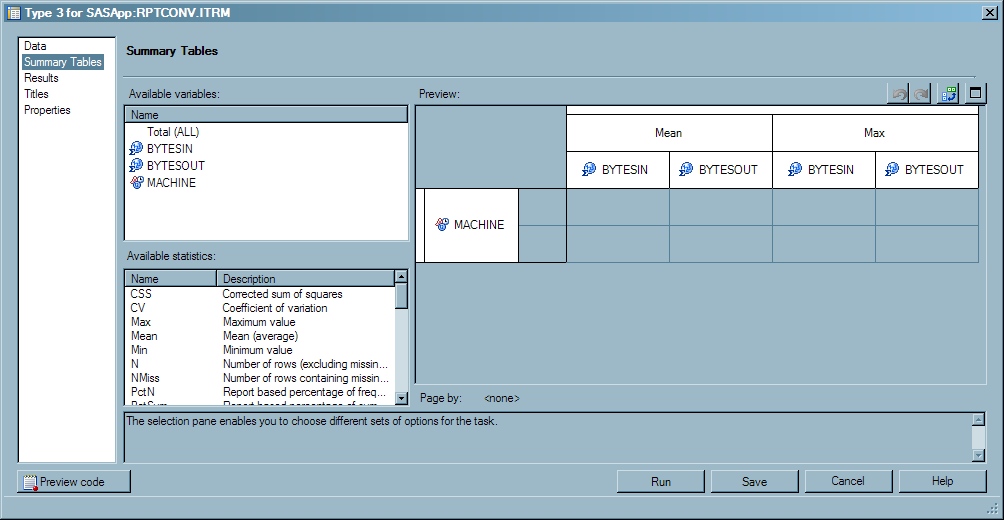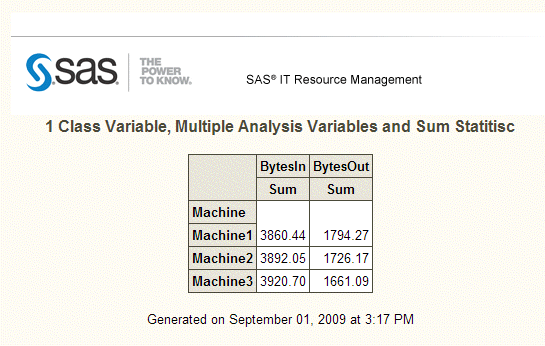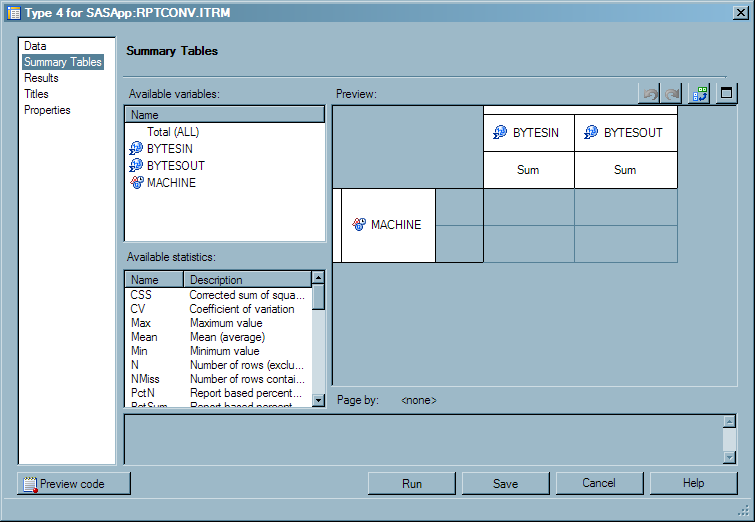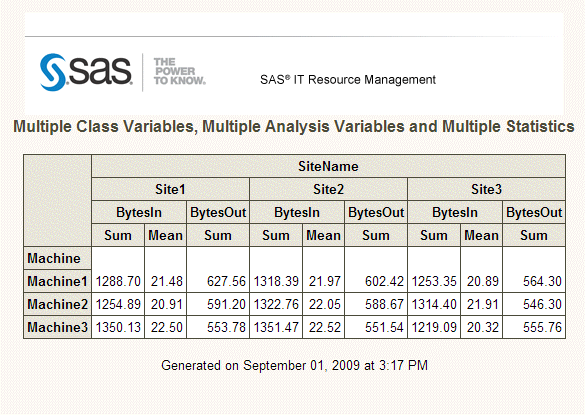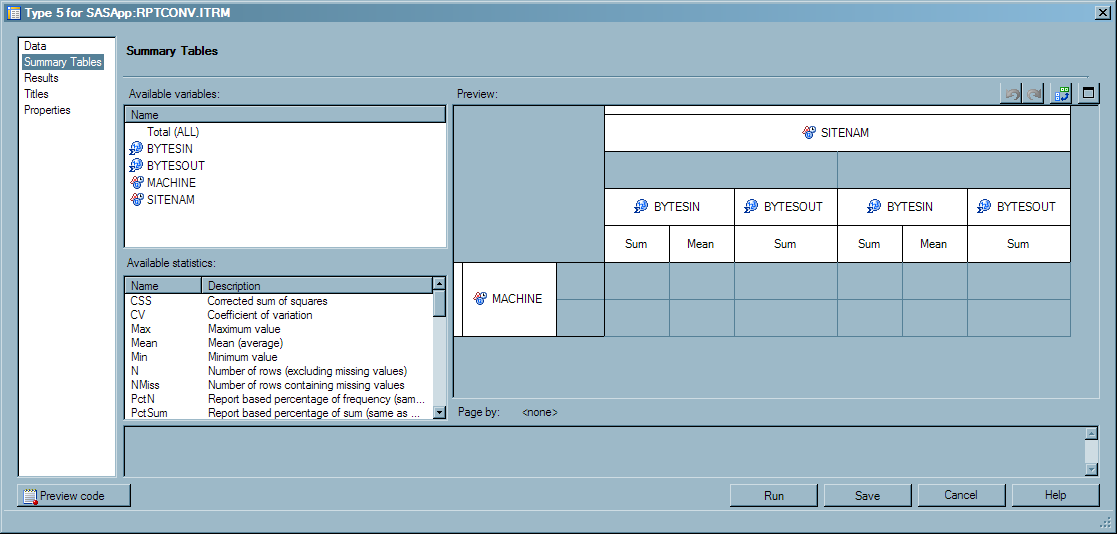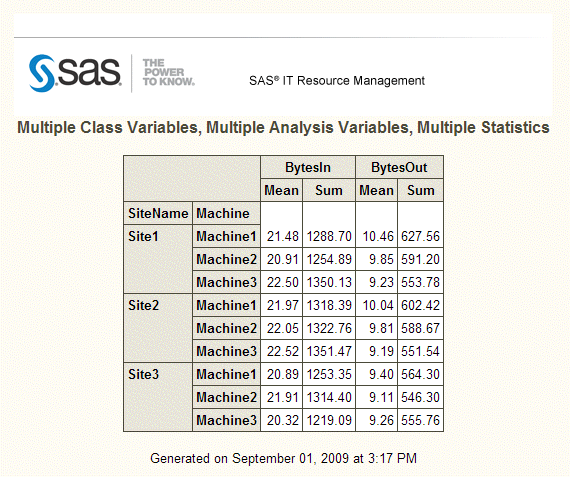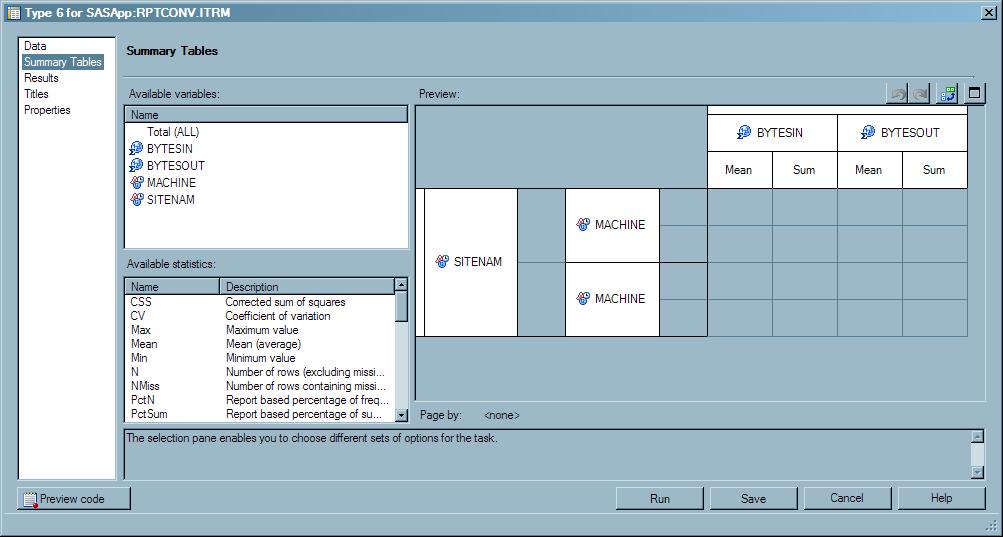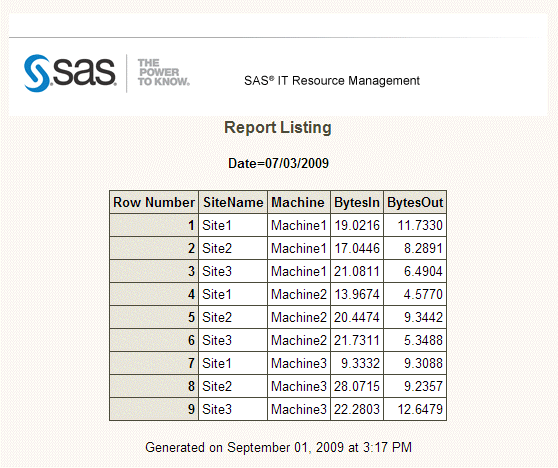Creating Tabular Reports Using SAS Enterprise Guide
This section discusses the means by which tabular
reports were created with SAS IT Resource Management 2.7 and the recommended
means by which they are created using SAS IT Resource Management 3.2.
About Tabular Reports
The following
table shows the six tabular report types that are available in SAS
IT Resource Management 2.7 and the corresponding SAS Enterprise Guide
task that is available to generate those report types in SAS IT Resource
Management 3.2.
SAS IT Resource Management
2.7 uses the macro %CPTABRPT to create all of the variations that
are shown in the preceding table. In SAS Enterprise Guide, you can
create any of these variations with the Summary Tables task.
The following examples
show the report output and the Summary Tables task for each of the
preceding variations. To create any of the reports in examples 21–27,
perform the following steps:
